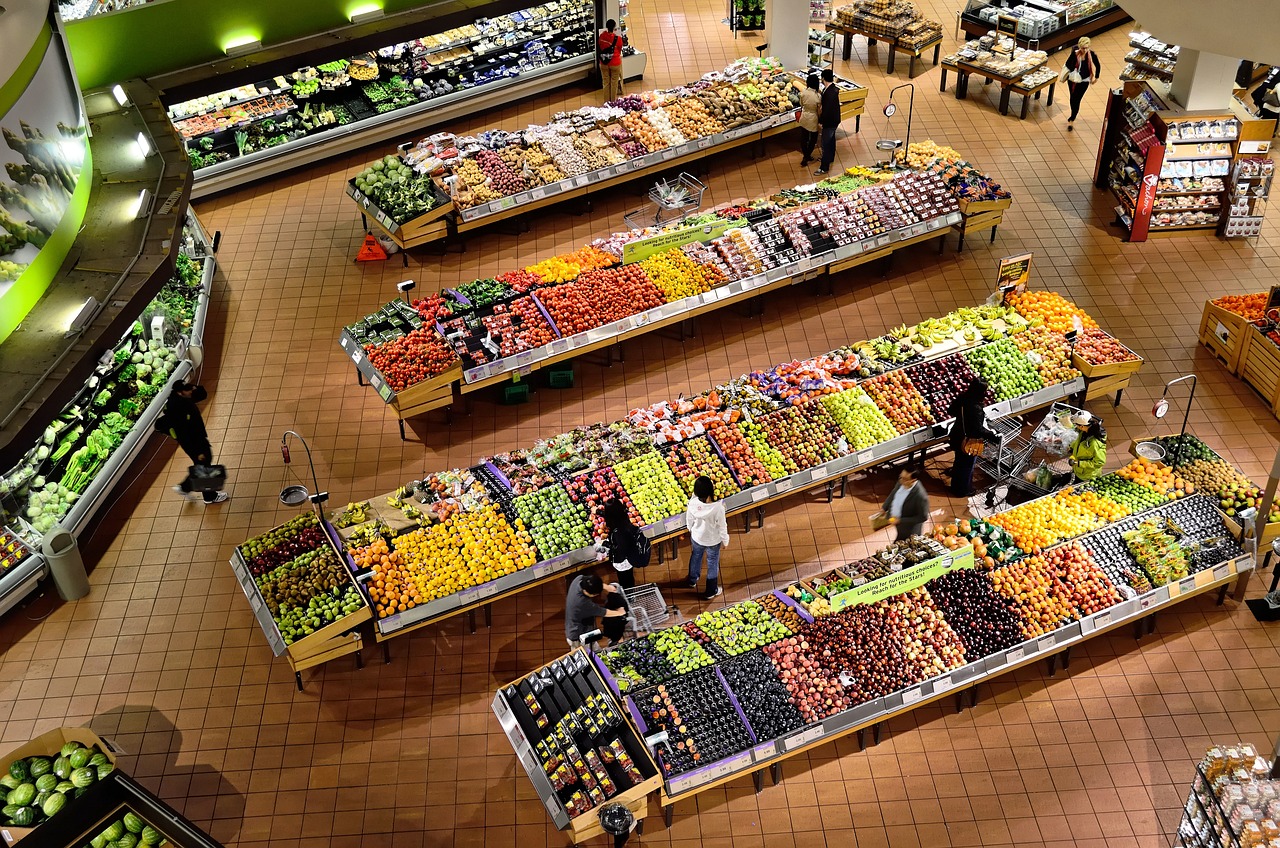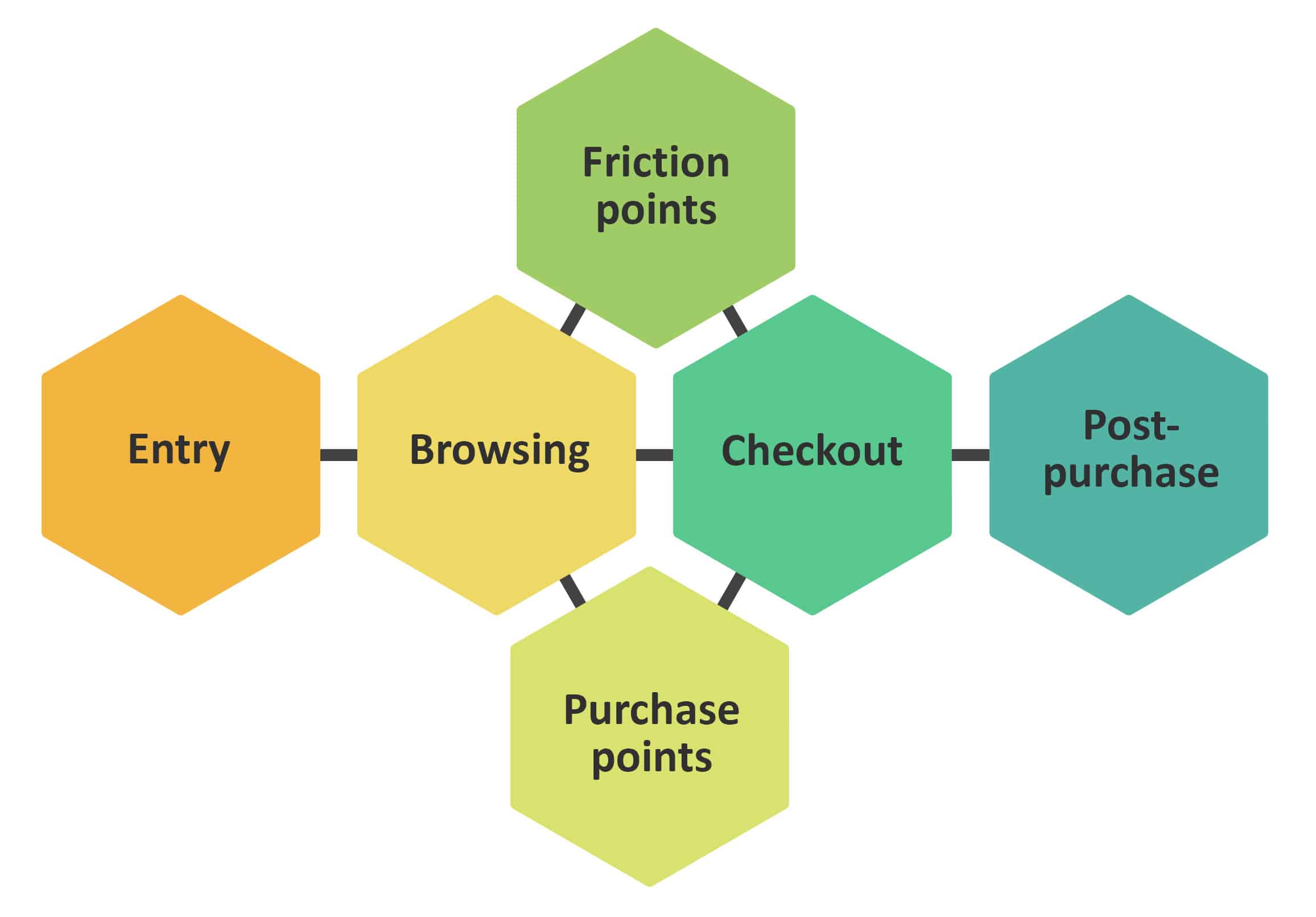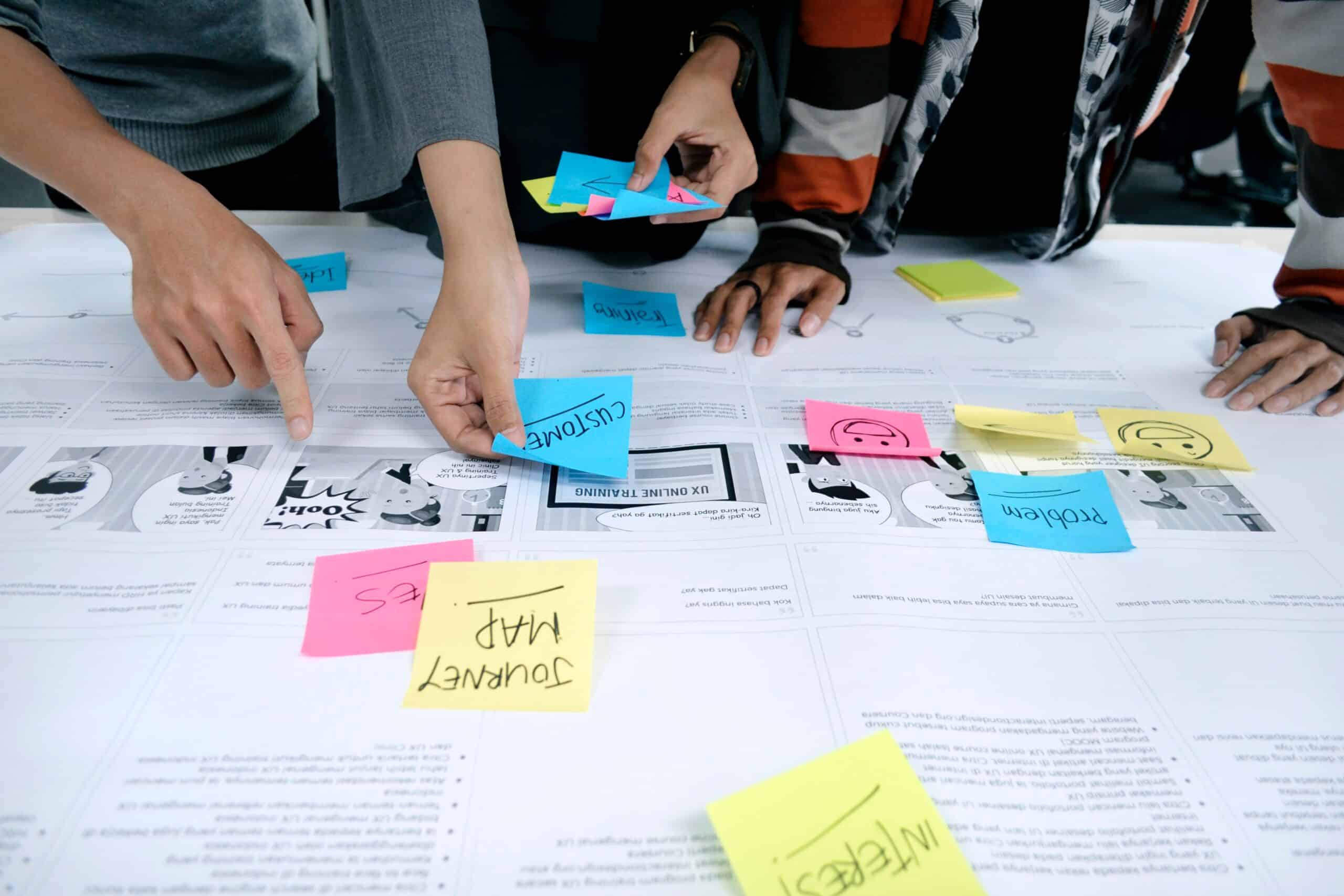Need help implementing your CX goals?
Our industry knowledge and experience are at your service. Contact CX by Design for a free 30-minute session and take the first step towards a thriving future!

edit Lis Hubert
event 10/11/2023
pace 4 mins
Understanding the customer journey in retail is a little different than understanding the customer journey in general – especially when you’re creating a customer journey map for a physical store. In this article, we’ll examine why the retail customer journey is unique and how to plot it on the right kind of customer journey map. We’ll also discuss how you can craft a great customer experience and inspire customer loyalty in an online or offline retail setting.

A customer journey map is a visualization of how a customer moves through the stages from awareness to purchase and beyond. It includes information about what the customer is thinking, feeling, and doing at a certain stage as well as what their immediate and long-term goals are.
Most customer journeys can be divided into at least five stages:
While many retailers use standard customer journey maps, they may also need retail customer journey maps for specific areas, such as a customer’s path to purchase inside a physical store. In this article, we’ll focus on retail customer journey maps, especially the in-store variety. If you’d like to learn more about standard customer journey maps, read this article.
Customer journey maps offer a good way to match what a customer needs with where they are in their journey. In retail, these maps can also highlight disconnects between touchpoints, mismatched interactions, and gaps in the customer’s experience. It helps retailers connect the customer experience with customer motivations, unite fragmented areas, and adjust underperforming touchpoints.

There’s a growing trend in business today towards customer-centricity. In its most basic form, this means keeping the customer’s needs and wants in mind at all times. But unless you correctly understand what the customer needs and wants at each given phase in their buying journey, you’ll struggle to meet their expectations.
Optimizing the retail customer journey starts with understanding its stages. In a physical store, this means considering more than just how customers enter the store, choose an item, and checkout; it can also include how they get to the store and their movements inside it, as both of these factors influence what is purchased. In an online setting, the retail customer journey can be closer to the traditional customer or user journey.

It’s also important to understand who your customers are; you might be surprised how far this term reaches. Check out this article on identifying customers for more insight.
We want to emphasize that retail customer journeys are not linear; customers rarely proceed directly to the item they want to purchase, choose one, and complete their sale.
In an online store, they often look at competitors’ items, accessory items, and things that are completely unrelated to their original goal. In a physical store, customers may move from department to department, circle back, browse, change their mind, and so on. So, your customer journey path may have other points than the ones we’ve sketched out below.

For convenience, we’ve numbered these stages in the list below. Aside from the first and last stages, they may occur in a different order.
In a physical setting, this is when the customer enters the store. It also includes how they traveled to the store, the signage in the entryway and parking lot, etc. Online, this correlates with a person’s first visit to the website and the signup or login process.
As you’d guess, this deals with how people move around in the store: what they see, the employees they talk to, how items are displayed, informational signs, store layout, etc. In physical stores, this information includes foot traffic patterns, common customer paths, and other types of people tracking (individuals as well as groups). Online, it’s pretty much what the name suggests: how customers move through the website.
These are areas and times when a customer decides to buy a given product. In a physical store, there are multiple purchase points – i.e. when a person adds an item to their shopping cart, that’s a purchase point. These points can be influenced by employee interactions, end caps and product displays, packaging, signage, lighting, sound, and many other factors.
These are things that prevent or slow the customer from reaching their goal. From a customer’s perspective, some might be classed as annoyances (long lines, slow website loading times, items out of stock, etc.). Both in online and physical settings, abandoning an order or item or taking a long time to complete a task is a good indication of friction.
Again, this is pretty much what it says on the tin. Potential factors in the physical checkout process include line length, time of day, number of checkout lanes, number of self-service checkouts, number of employees on duty, and even the season and weather. Online, we often look at the complexity of the checkout process; the longer and more complicated it is, the greater risk that customers will choose not to complete it.
Online and off, this includes customer service and satisfaction, surveys, follow ups, troubleshooting/returns, and the like.
Each of the above stages contributes to the customer experience and their buying journey. While post-purchase may seem like it’s a separate part of the retail customer journey, it’s essential to encouraging repeat customers. For more ideas, see this article on how retailers harness post-purchase experiences.
Creating visual representation of the path a person takes to becoming a retail customer can bring a lot of clarity to your business. It can fast-track retail optimization – highlighting improvement areas, helping you refine your marketing and advertising, and improving your internal workflows.

Ultimately, an accurate customer journey map can help you create satisfied, happy customers that keep coming back to your business. So, how do you go about making an effective map?
Before we wrap up, let’s consider what will drive the retail customer journey for the coming years.
As in industries all over the world, AI and the digital revolution are going to be key players in the future of retail customer experience. In online shopping, AI has already made its presence felt in the realms of customer service (i.e. AI-powered chatbots that answer customer questions) and recommendation engines. It’s also used ubiquitously for data processing and analysis – both online and off; this has resulted in operational improvements and cost savings. Furthermore, we’re seeing AI expand into other areas of the customer journey, such as hyperpersonalization. Expect these trends to continue into 2024 and beyond.

Even physical stores are experiencing the push towards a digitalized customer experience. For example, department store customers can shop in-store and scan items using the store brand’s app. This allows them to handle most of the checkout process and greatly reduce the time they spend in the checkout lanes, which means less congestion during busy times.
This is just one example of what’s known as a ‘phygital’ interaction – an interaction that takes place in the store but includes digital elements. Phygital (to say it, imagine you’re replacing the “d” in “digital” with an “f”) emphasizes a holistic approach to the customer experience and strives to seamlessly blend the digital world with the physical world.
Other important retail CX trends include authenticity and socially-conscious consumerism; you can read more about it in Bernard Marr’s excellent article. And while we’re fascinated by the ways technology can make the retail experience better and smoother, we also encourage you to remember that technology has to serve humans. In other words, it has to meet customer needs and make sense for the humans using it. As the retail customer journey incorporates more digital touchpoints, we have to ensure that humans are always at the center of our decisions.
Understanding how and why customers make the choices they do is crucial to creating the best possible retail customer journey. A customer journey map that’s geared towards retail experiences – whether in a physical store, through an e-commerce site, or as a blend of the two – is an essential way to build understanding and empathy for your customers.
Contact CX by Design today to better understand your retail customer’s journey. Schedule your free 30-minute consultation here. We have over 20 years of experience in crafting great customer experiences, we’re uniquely qualified to help you connect with your customers in a meaningful way.
Our industry knowledge and experience are at your service. Contact CX by Design for a free 30-minute session and take the first step towards a thriving future!

Want to help your company thrive using the principles of human-centered design? Our FREE 30-minute introductory session will get you on the right path!
Schedule your free consultation